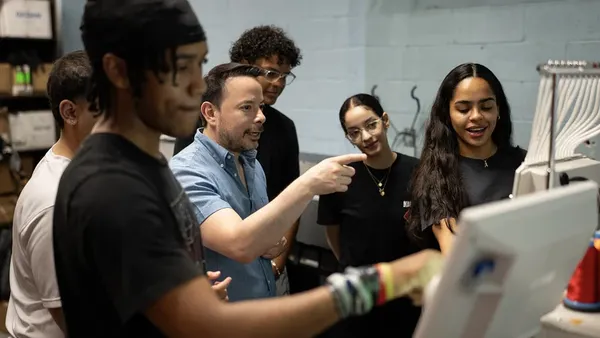The Houston Independent School District, two years post-state takeover, had zero failing schools as of the 2024-25 school year, according to preliminary results released Tuesday.
Texas’ largest school district also more than doubled the number of schools earning an A or B rating, from 93 two years ago to 197 last school year — meaning almost three quarters of its 273 schools are now in those top tiers.
The improvements are especially concentrated among previously underperforming schools in historically underserved areas that enroll primarily low-income, Black and brown families, according to Houston ISD Superintendent Mike Miles. This means achievement gaps in the district are closing, Miles said.
"It makes the point that ZIP code doesn't have to be destiny," said Miles. "It can be done if there's the will to do it."
The state takeover of Houston ISD, which was surrounded by controversy and resistance, is one of the most watched takeovers in the nation because of its large scale.

After Miles took the reins in the summer of 2023, the district designated about a third of its schools as “New Education Schools” and targeted for wholesale, systemic reform rather than incremental changes sometimes seen in other state takeovers. The number of NES schools was expanded to 130 total by 2024-25.
'That is doable in any district'
Houston's improvements come as more districts nationwide are facing financial hardships, decreasing enrollments and possible state intervention.
Houston's takeover, for example, was launched after the district invested its pandemic relief dollars in recurring expenses, which district finance experts had warned against given the likelihood of fiscal cliffs as federal aid dollars ended and districts' budget cuts ensued.
Miles said the district is working toward systemic reform without any additional funding — and with a budget deficit, meaning it had to reprioritize before seeing gains. "Every large urban or medium-sized urban district has the money to do what they prioritize," said Miles.
For districts seeking turnaround, Miles suggests prioritizing funding to boost the quality of instruction and school building leadership, including by:
- Having the most effective teachers teach the lowest-performing kids.
- Developing teacher capacity and making sure principals are instructional leaders.
- Coaching principals to be able to coach teachers.
- Having instructional executive directors who can train principals under their charge.
- Having high-quality instruction that guides high-quality curriculum rather than the other way around.
"And so all of that is doable in any district, and it doesn't have to take that much money," said Miles. The biggest expense, he said, is for teacher salaries — which Houston ISD has in fact raised — and for teacher apprentices.
The exit plan
Although Houston has shown success since its takeover, the district still has 18 D-rated schools. And the Texas Education Agency, which is expected to release the district's formal results on Aug. 15, announced in June that the takeover would be extended by two years.
The extension, Miles said, is partly to help ensure that the districtwide reforms don't revert after the state hands over leadership to an elected board, as has happened in other districts.
"It's like losing weight. Say you have to lose 40 pounds — the first 30 is probably easier than the last 10 to lose," said Miles. "It's still hard work, you know, and we have to stay where we are."
However, where Miles was previously uncomfortable calling Houston's improvement a "trend," he acknowledged on Tuesday with the release of the preliminary results showing the district's performance is trending upward.
Not only has the district improved its performance on state assessments, but it has also shown gains on other tests like the National Assessment of Educational Progress, NWEA MAP Growth, and the Dynamic Indicators of Basic Early Literacy Skills.
"We feel confident that the data are accurate and really do tell the story of a Houston turnaround," Miles said.













